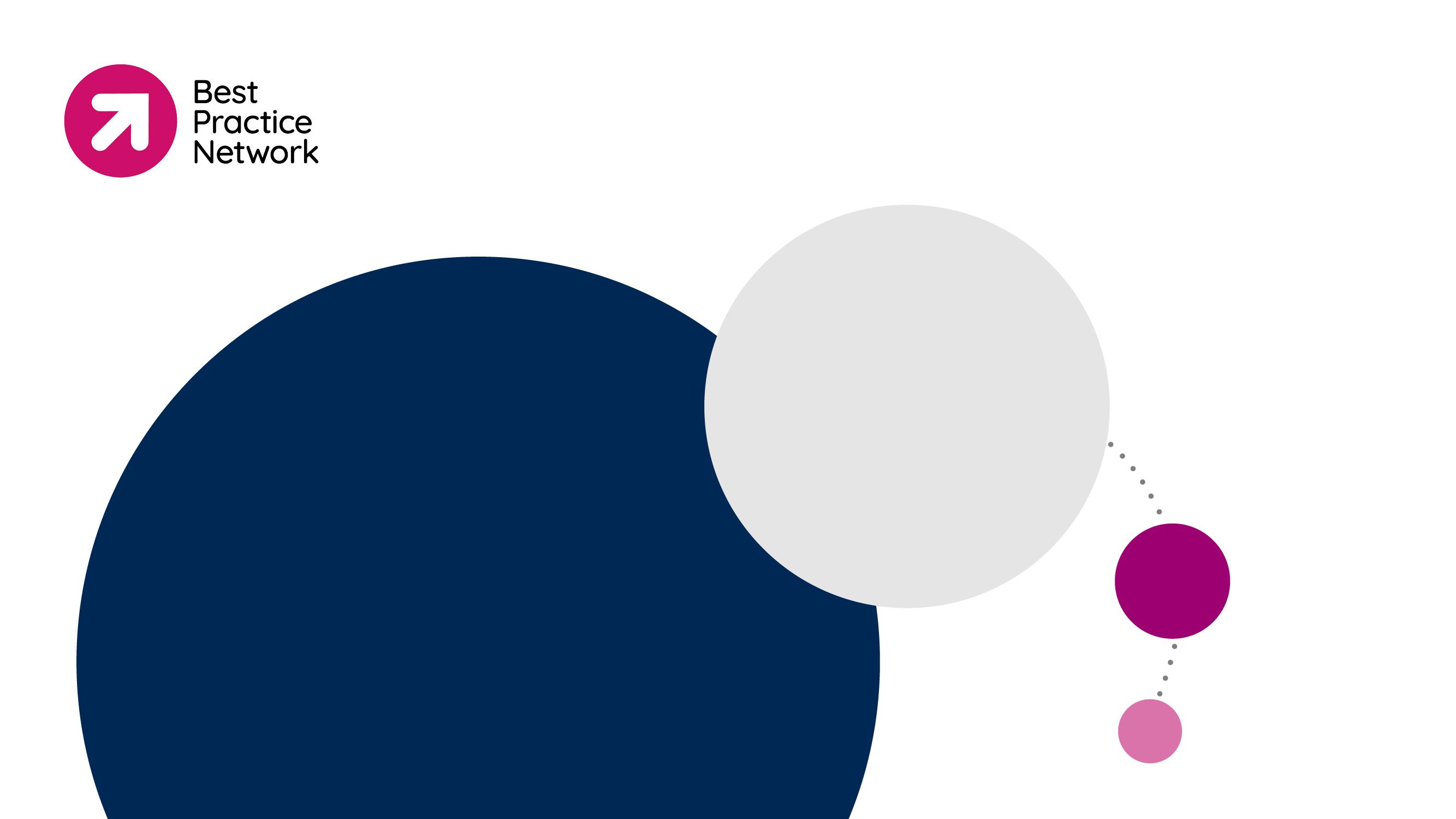

First Day of Learning (FDoL)

Level 5 Operations Manager Apprenticeship with Thrive



First Day of Learning (FDoL)

Level 5 Operations Manager Apprenticeship with Thrive
(PowerPoint will be shared & a Podcast is also available)




(PowerPoint will be shared & a Podcast is also available)


An apprenticeship is a learning programme that allows you to learn while you earn.
Your Thrive apprenticeship is a dual programme - you will complete your apprenticeship with Best Practice Network alongside the Thrive programme.








• Operations Manager level 5 apprenticeship with Best Practice Network (14 months with 3 months end point assessment)
• Thrive Licensed Practitioner course – completed alongside your apprenticeship, you will gain your Thrive license on completion of your apprenticeship.
Apprenticeship with Best Practice Network
Monthly Virtual classroom sessions
Thrive Licensed Practitioner
Monthly Thrive sessions
Reviews every 4-6 weeks with apprenticeship tutor Mentoring sessions with Thrive at months 4, 7, 11 and 14
Tasks given monthly to support development of knowledge skills and behaviours and prepare for EPA (some are planned to naturally overlap with Thrive tasks to avoid repetition)
Thrive tasks set each month, eLearning tasks to complete







Aim
• Initial activity (your ‘First Day of Learning’) to officially start your apprenticeship
Objectives
• Discover key change management models (K17, K8, K25)
• Develop an understanding of how to lead and support change in teams and organisations (S12, S6)
• Lead discussions on practical approaches to implementing and managing change effectively (S7, S16)
Requirement
• 250 to 300-word submission on what you have learned from this webinar (& any additional research you may choose to engage with)


Upload to BUD or email to your apprenticeship tutor (AT) within 5 working days (include today’s date)
Inspire Learning
Every child able to receive an excellent education, regardless of background.
Work Together
Every education professional supported to be their best.
Act with Integrity



We aim to change lives for the better by inspiring and developing colleagues working in education. As a team and a network, we inspire each other to grow personally and professionally.
Across the network, personal relationships and collaboration are at the heart of what we do. We show care and support for our candidates, partners and colleagues, and we go the extra mile to get things done.
We can be trusted, and we do what we say we will. We are open and straightforward, tackling challenges head-on rather than avoiding them. We treat each other with respect and dignity.
We have high expectations of ourselves and others. We invest and innovate to deliver the best learning, systems and outcomes. We keep things simple, use evidence and embrace change to achieve our best.


Safeguarding & Prevent
British Values
GDPR
Health and Safety
Equality, Diversity and Inclusion




www.bestpracticenet.co.uk/safeguarding https://www.bestpracticenet.co.uk/our-policies
• Discover key change management models (K17, K8, K25)
• Develop an understanding of how to lead and support change in teams and organisations (S12, S6)
• Lead discussions on practical approaches to implementing and managing change effectively (S7, S16)


• Introduce yourself to the group
• Discuss what you already know about change management models



A. I usually embrace it
B. I usually accept it but find it challenging
C. I usually resist it

A. They usually embrace it
B. They usually accept it but find it challenging
C. They usually resist it


Kotter’s 8-Step Process: Leading Organisational Change (K17)
• John Kotter’s (1996) model provides a structured approach to managing change in organisations.
• It focuses on building urgency, vision and stakeholder engagement.




1. Create urgency – inspire action with a compelling reason for change.
2. Build a guiding coalition – form a team with authority to lead change.
3. Develop a vision & strategy – clearly define what success looks like.
4. Communicate the vision – ensure everyone understands the direction.


5. Remove obstacles – address resistance and empower employees.
6. Generate short-term wins – create milestones to maintain momentum.
7. Sustain acceleration – keep driving change beyond initial success.
8. Anchor change in culture – make the change part of everyday operations.


Key concept: Change happens through structured steps, ensuring employee buy-in.
Often used for: Large-scale organisational change, cultural shifts.


Kotter International Inc.


Develop key change management models (K17, K8, K25)
• Introduce yourself to the group
• How is change managed (and perceived) at your setting/s?
• What potential barriers might you need to manage?


Kurt Lewin’s (1947) model breaks change into three phases: Unfreeze, change, refreeze. It focuses on preparing people, making the change and embedding it.
1. Unfreeze – assess readiness for change. Communicate the need and reduce resistance.
2. Change – implement the change with support and engagement. Provide training if needed.
3. Refreeze – reinforce new behaviours, update policies, and celebrate success.





Key concept: Change is a process of breaking old habits, introducing new ones and ensuring sustainability.
Often used for: Simple structural or behavioural changes, process improvements.




ADKAR is a goal-oriented change model focusing on individual transitions. Each stage must be completed for successful change.
Founded by Prosci founder Jeff Hiatt in 1996, it focuses on guiding individuals through the change journey by helping them realise the need for change, equipping them with the skills and knowledge they need to adapt to it, and motivating them to embrace it fully.




1. Awareness – understand why change is needed.
2. Desire – encourage personal motivation to embrace the change.
3. Knowledge – provide training, skills and information.
4. Ability – ensure people can implement the change effectively.
5. Reinforcement – sustain the change through rewards and support.


Key concept: successful change requires personal and organisational alignment.
Often used for: employee-driven change, personal development, team transformations.




• Introduce yourself to the group
• Consider the scenarios on the next slide
• Which model do you think would be the most relevant for each and why?


Consider these three scenarios (this slide will be shared to breakout rooms)
For each scenario, which model do you think would be the most relevant for you/your organisation and why?
Your organisation wants to reduce the number of fixed term and permanent exclusions by introducing the thrive approach. The focus is on preparing employees, making the changes in small steps and reinforcing them with long-term incentives.
Your organisation/setting is merging two teams who have previously worked independently. Employees are concerned how this might affect them and possible role changes. How can a structured change process help?
Your organisation is changing their behaviour policy to be more relational and include thrive as part of the new approach. Some employees are resistant and the leadership team wants to review your setting’s vision and clarify the benefits.


Consider at least one but try to discuss all three, if you can
- Consider: ‘Discover, Develop, Lead’ as a mindset for navigating change.
- Change management will be explored further as part of your apprenticeship.


• Which change management model do you think will be most useful in your role? Why?
• A. Kotter’s 8-Step Process
• B. Lewin’s Change Model
• C. ADKAR Model
• D. Might vary depending on the particulars of the change involved


Aim
• Initial activity (your ‘First Day of Learning’) to officially start your apprenticeship
Objectives
• Discover key change management models (K17, K8, K25)
• Develop an understanding of how to lead and support change in teams and organisations (S12, S6)
• Lead discussions on practical approaches to implementing and managing change effectively (S7, S16)
Requirement
• 250 to 300-word submission on what you have learned from this webinar (& any additional research you may choose to engage with)


Upload to BUD or email to your apprenticeship tutor (AT) within 5 working days (include today’s date)



